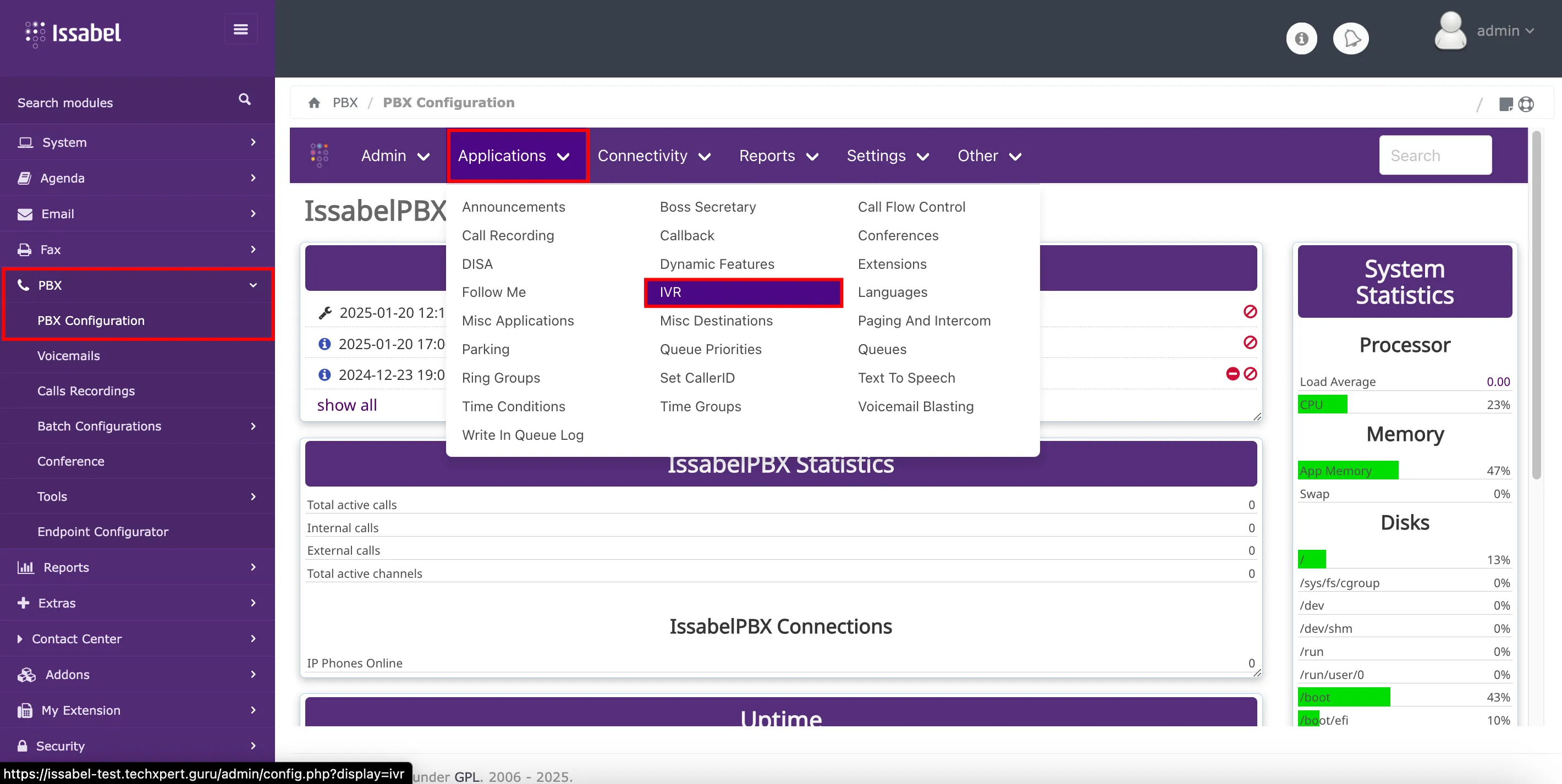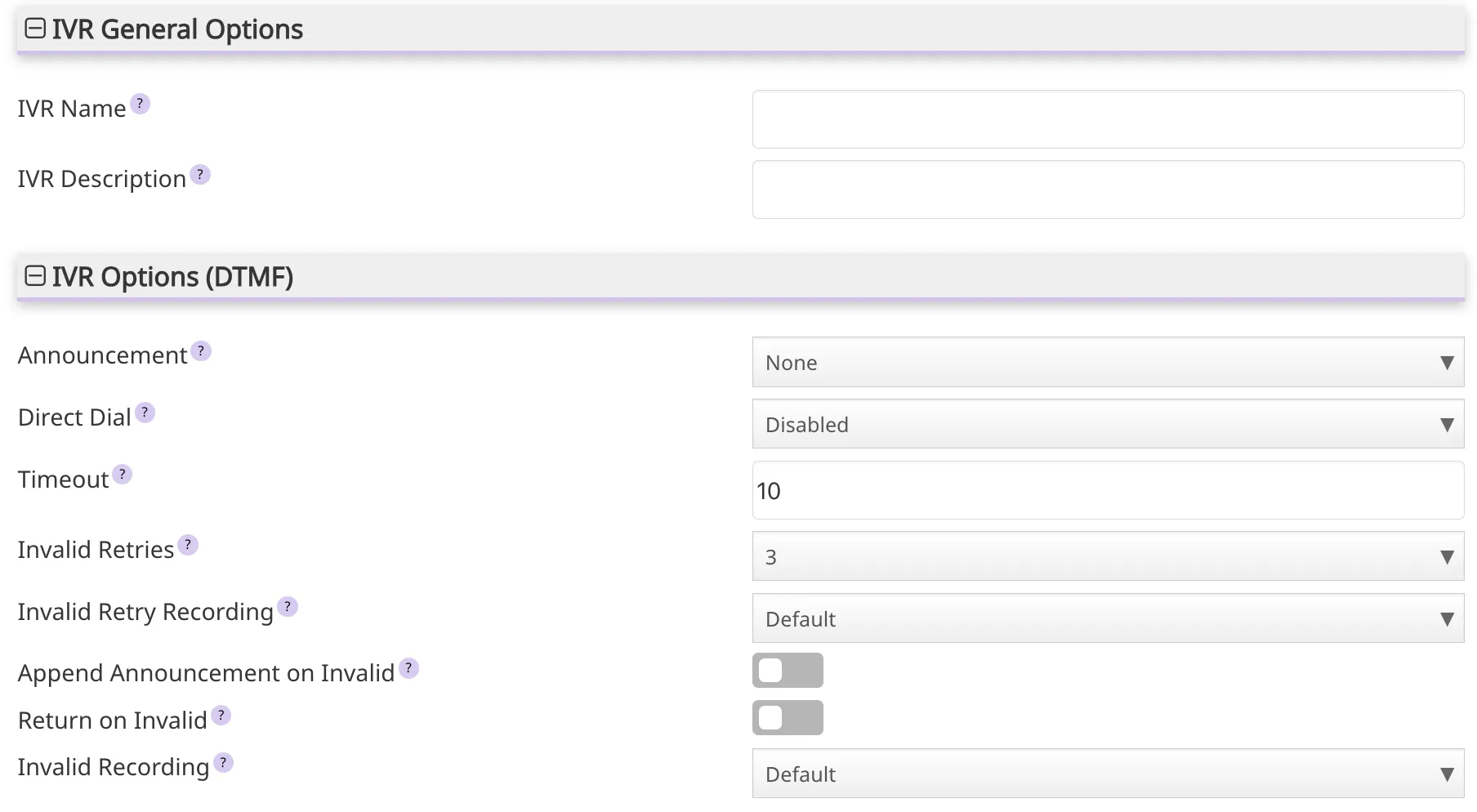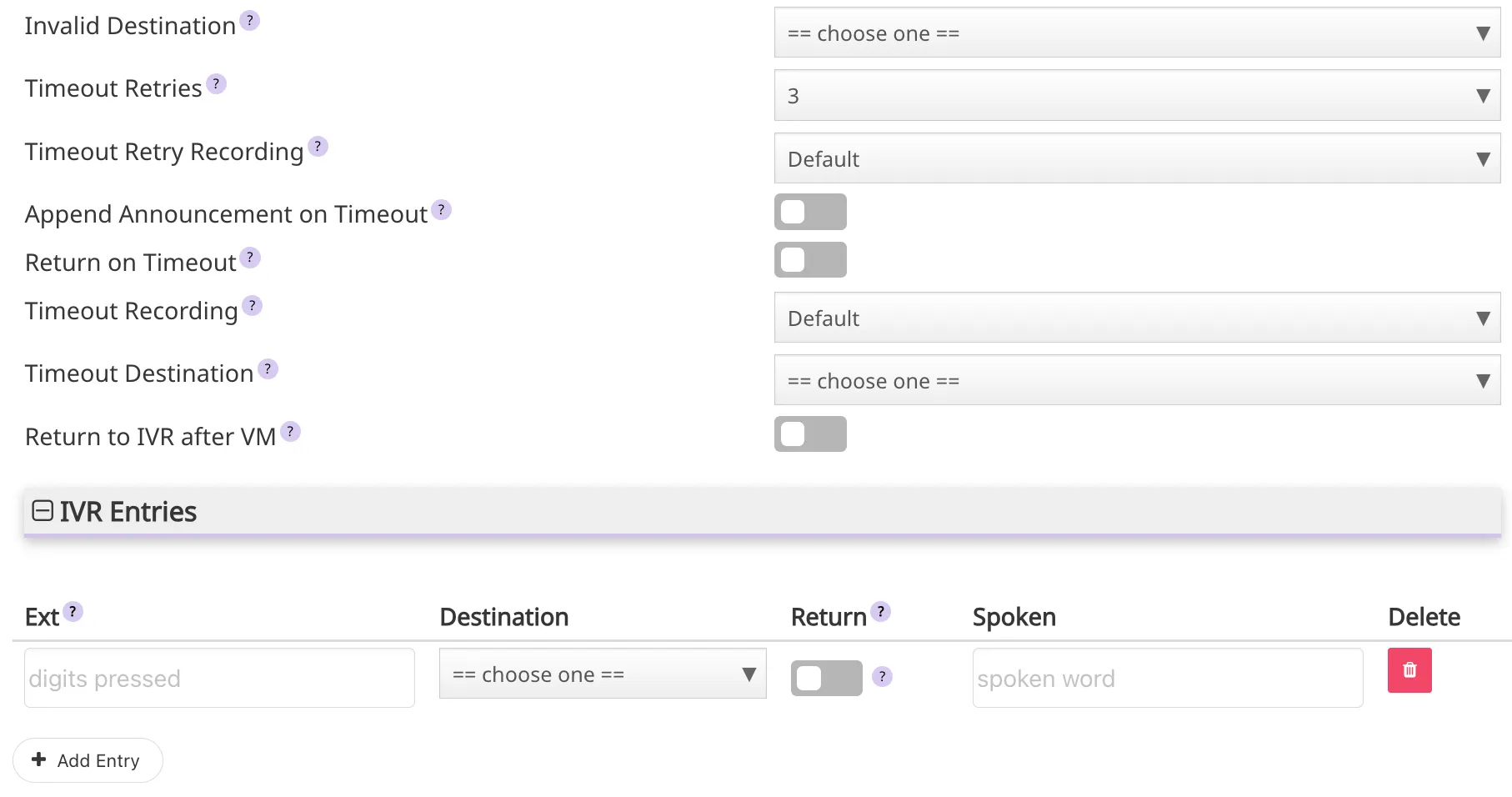Interactive Voice Response (IVR)
An Interactive Voice Response (
IVR) system in Issabel PBX is an automated telephony menu system that interacts with callers, gathers information, and routes calls to the appropriate destination without the need for a human operator. IVRs play a critical role in managing call flow efficiently, enhancing customer experience, and reducing operational costs. What is an IVR?
An
IVR is a pre-configured system that uses recorded audio prompts and DTMF (Dual Tone Multi-Frequency) tones from a caller's phone keypad to determine the purpose of the call and route it accordingly. In more advanced setups, IVRs can also work with speech recognition to allow callers to interact using their voice. How IVRs Work in Issabel PBX
1. Call Entry:
- A caller dials a number associated with the
PBX. - The call is routed to the
IVRas per inbound routing rules.
2. Interaction:
- The
IVRplays recorded prompts, such as "Press 1 for Sales, Press 2 for Support." - The caller inputs their choice using their phone keypad (or voice, if speech recognition is enabled).
3. Routing:
- Based on the input, the
IVRroutes the call to the appropriate destination, such as an extension, queue, ring group, or even anotherIVR.
Key Components of IVR in Issabel PBX
1. Audio Prompts:
- Pre-recorded messages that guide callers through the menu options.
- Can be uploaded or recorded directly through the
PBXinterface.
2. Menu Options:
- The choices presented to callers (e.g., "Press 1 for Billing").
- Each option corresponds to a specific action or destination.
3. DTMF Input:
- The caller's input (e.g., pressing keys on their phone) is used to navigate the
IVRmenu.
4. Destinations:
- The endpoints where the IVR routes the call, such as:
- Extensions
- Queues
- Ring groups
- Voicemail
- Other
IVRs - External numbers
5. Timeouts and Invalid Inputs:
- Configurable actions if the caller doesn’t input anything or inputs an invalid option.
- Options include replaying the menu, routing to an operator, or disconnecting the call.
IVR Configuration
Setting up an Interactive Voice Response (
IVR) system for Issabel Contact Center is essential to improve customer experience and optimize call management. By directing calls to specific queues, you can ensure that customers are served by the right agents efficiently. Below is a simple flow which can be functional for most companies. - Log in to the Issabel web interface with an account that has administration permissions.
- Navigate to
PBX→PBX Configuration→Applications→IVR.

A form will be displayed to set up a new
IVR. Its main paramters are described below: IVRName: The name of theIVRto create.IVRDescription: Descriptive detail of theIVR.- Announcement: Greeting recording to be played on entry to the
IVR. - Direct Dial: Provides options for callers to direct dial an extension. Direct dialing can be:
- Completely disabled.
- Enabled for all extensions on a system.
- Timeout: Amount of time to be considered a timeout.
- Invalid Recording: Prompt to be played before sending the caller to an alternate destination due to the caller pressing 0 or receiving the maximum amount of invalid/unmatched responses (as determined by Invalid Retries)
- Invalid Destination: Destination to send the call to after Invalid Recording is played.
IVRentries:- Ext: Any digit selection will be saved in the IVR_DIGIT_PRESSED chanel variable.
- Destination: The destination of the entry once the corresponding digit is pressed. The destinations can be the same
IVR, anotherIVR, queues, announcements, extensions, among others.


Advanced IVR configuration
1. Nested
IVRs:- Create hierarchical menus by linking
IVRstogether. - Example: After selecting "Press 1 for Sales," the caller hears another menu for region-specific options.
2. Time-Based
IVRs:- Route calls to different
IVRsbased on the time of day. - Example: Use a separate
IVRfor after-hours calls.
3. Multi-Language Support:
- Offer
IVRmenus in different languages by playing specific prompts based on the caller's selection or DID.
4. Caller ID-Based Routing:
- Route calls dynamically based on the caller’s phone number (e.g., prioritize VIP clients).
5. Integration with Databases:
- Use external databases to validate caller input, such as account numbers or PINs.
6. Recording and Reporting:
- Record calls and generate reports to monitor
IVRperformance and optimize call flow.
Benefits of Using IVR in Issabel PBX
1. Improved Call Management:
- Handles high call volumes efficiently by routing callers without human intervention.
2. Enhanced Customer Experience:
- Provides 24/7 automated assistance and ensures callers reach the right department quickly.
3. Cost Savings:
- Reduces the need for additional staff to handle calls.
4. Scalability:
- Easily adapt to changing business needs by updating
IVRmenus and options.
5. Professionalism:
- Presents a polished and organized image to callers.
6. Flexibility:
- Supports complex routing scenarios and integrations.
Common Use Cases for IVRs
1. Customer Service:
- Route calls to the appropriate support department based on the nature of the inquiry.
2. Sales:
- Direct prospects to specific sales teams or agents based on their region or product interest.
3. After-Hours Support:
- Provide recorded messages or route calls to voicemail when the office is closed.
4. Self-Service:
- Allow customers to check account balances, payment statuses, or appointment schedules.
5. Surveys:
- Use
IVRsto collect customer feedback through automated surveys.
Challenges and Best Practices
Challenges:
- Complex menus can frustrate callers.
- Poorly recorded prompts or unclear instructions can lead to confusion.
- Over-reliance on automation might alienate customers who prefer human interaction.
Best Practices:
1. Keep Menus Simple:
1. Keep Menus Simple:
- Limit options to a manageable number (e.g., 3-5 choices per level).
- Ensure audio is high-quality and easy to understand.
- Always include an option to reach a live operator.
- Verify that the IVR works as intended and update it as needed.
- Use call reports to identify bottlenecks and optimize the IVR..
IVRs in Issabel PBX are a powerful tool for managing calls efficiently and enhancing customer experience. With proper configuration, they can streamline operations, reduce costs, and provide a professional interface for callers. By following best practices and leveraging advanced features, businesses can maximize the value of their IVR systems. Like all pbx configuration modules, in the
IVR module, each configurable field has a question mark on the right side of its name, and when you hover the mouse or click on this sign, important information about the field is displayed, the which can serve as a guide for its configuration. If there is any incorrect or incomplete information, or additional information needs to be generated, please write to isscc@issabel.com